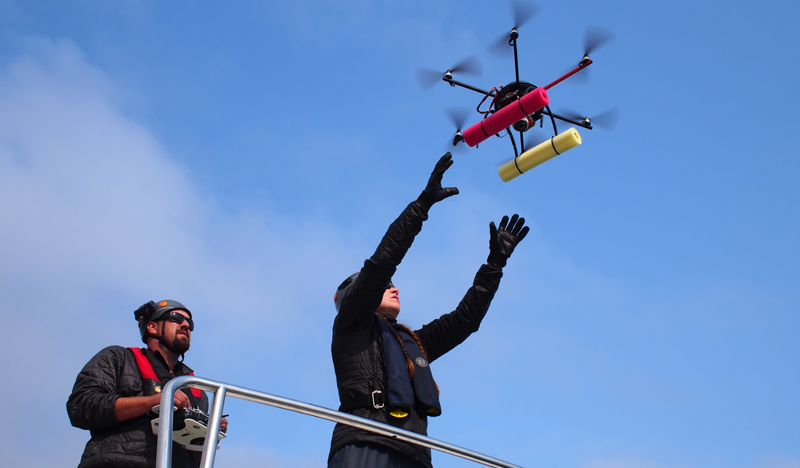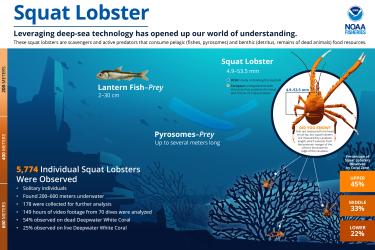Former NOAA Fisheries Chief Science Advisor Richard Merrick discusses how the agency is modifying its approach to fisheries management, making the most of new technology and advanced research methods, and providing the best available science to inform policy decisions for a future in which the only certainty is change.
What are some of the major trends or issues you see in fisheries science today?
First, climate change is one of the biggest issues facing fisheries science and management today. Marine ecosystems are complex environments that are responding to the ongoing effects of climate change in a variety of ways. Climate change is driving changes in the distributions of fish stocks and their habitats. These effects are worldwide, but are especially evident in the Gulf of Maine and the Arctic. This will impact fishing communities, some growing, others declining.
Second, we’re using more advanced technology, such as remote sensing from airborne and autonomous underwater platforms, animal deployed sensors, genomics, electronic reporting, and electronic monitoring, which will allow better observing and understanding of marine populations and their environment.
How is NOAA Fisheries preparing for the effects of climate change?
The nice thing about climate, if there is a nice thing about climate, is that it’s forcing all the fishery management councils and all the regional offices to think differently about how we manage marine resources and to start thinking about the ecosystem. Traditionally, NOAA Fisheries focused on life history and biology of individual species to inform single-species stock assessments.
When you look at the Gulf of Maine, the climate effects there are not just affecting cod; they’re affecting lots of species. So you’ve got to stop thinking about just managing cod when you recognize the cod population is going to go down, but the black sea bass population is going to go up. In other regions, we’re dealing with issues of sea level rise, ocean acidification, and coral reef bleaching. To more effectively manage U.S. living marine resources, we need ecosystem-based approaches to fisheries management that incorporate multiple fish stocks and their habitats.
You mentioned that the effects of climate change are especially evident in the Gulf of Maine and Arctic. Why should we pay close attention to developments in the north?
Changes being observed globally are occurring more rapidly in the Arctic region than anywhere else on Earth. Temperatures are rising twice as fast in the Arctic as compared to the average global temperature rise. The temperature of the Arctic Ocean is also increasing. These temperature increases are of concern to our work for many reasons, including ocean acidification and changes in species distribution.
For instance, recruitment (the amount of fish added to a stock each year due to growth or migration) of walleye pollock is tightly associated with where the ice edge is. The Bering Sea ice edge is going to gradually move farther and farther north. The models we’ve done suggest that within the next 50 years we’re going to see at least a 40 percent pollock reduction in the Bering Sea. That’s big news to fishermen, and it will affect all of those coastal communities in Alaska because pollock is the largest fishery by volume in the United States.
If you have a community with a very diverse portfolio of stocks, they’re less vulnerable to climate change than if they’re really focused on one stock that’s very vulnerable to the effects of ocean acidification or warming ocean. Case in point: New Bedford, Massachusetts has the highest value of landings of any U.S. port, but 78 percent of the landings there are scallops. Scallops are vulnerable to ocean acidification. Same goes for Maine where they’re really focused on lobster, which are also vulnerable to ocean acidification.
Regardless of stock shifts, sea level rise might force infrastructure and fishery participants to relocate to less vulnerable areas. Through the development of a National Climate Science Strategy and the Ecosystem-Based Fishery Management (EBFM) Policy and Roadmap, NOAA Fisheries is preparing for these changes and developing frameworks to provide scientific advice that addresses climate change as an important component of EBFM.

Photo taken during first leg of 2010 Aleutian Islands survey on F/V Sea Storm, 6-29 June 2010. Photo: Michael Martin, Field Party Chief.
What’s unique about the way NOAA Fisheries uses new technology to assist our research and advance our understanding of our trust species?
We’re in a different situation than much of the rest of NOAA because we’re so driven by the regulatory side. We can’t get into a long research and development phase or spend a lot of time on technologies that we don’t see providing us answers pretty quickly.
One of the reasons we maintain a strong partnership with NOAA’s Office of Oceanic and Atmospheric Research is because they can do long-term research that would be difficult for our scientists to do at our regional science centers. Similarly, the cooperative institutes and academic institutions that we’re aligned with can also do that. Our partners develop most of the technology, and we work with them on it.
The end game is to better understand our trust species so we can manage them better or help them recover better. All of our advanced technological work has that as the end game.
How does NOAA Fisheries make the most of technological advancements?
We look at how to blend technologies. We’re going to need ships for a long time because they can carry a lot of people and accomplish a variety of tasks, but their endurance is short-lived compared to something like a Wave Glider or a Saildrone, which you can send out for 6 months. If we can use the ship to do biological sampling while a glider is doing acoustic sampling, we get more bang for our buck out of the combination. These “force multipliers” will enable us to collect and analyze more data, faster, and cheaper.
Can you give some examples of cutting-edge technologies that will help us work in more areas and collect more comprehensive information?
Unmanned aircraft systems allow protected species research to be done in ways that are cheaper, more accessible, and safer for our scientists. Small, inexpensive “hexacopters” are capable of operating from ships, small vessels, or shore. They can carry high-resolution visible and infrared imagers and, in the case of large whales, sensors that provide breath samples suitable for DNA and hormonal analyses.
Underwater autonomous vehicles that can assist ship-based surveys and operate in rough or very deep sea habitats. The SeaBED system, for example, has optical-acoustic-environmental sensors to conduct visual fish surveys and habitat mapping along the West Coast, Pacific Islands, and Gulf of Mexico.
The Northeast Fisheries Science Center has implemented an optical survey for Atlantic scallops using a towed camera system called the Habitat Mapping Camera Systems.
Thermal imaging (infrared) cameras are now becoming mainstay shore-based survey instruments used to track gray whales along the West Coast through a complete migration season.
Sea turtle gender is strongly influenced by the ambient temperature as eggs develop while buried in beach sand, so there is concern that the warming climate could impact the sex ratio, and thus the reproductive capacity, of sea turtle populations. New applications of endocrinology tools have enabled assessment of sex ratio (using testosterone to determine juvenile turtle sex) for all six sea turtle species listed under the U.S. Endangered Species Act.

